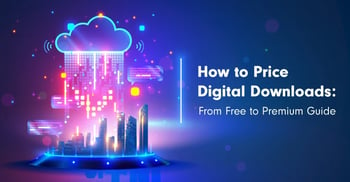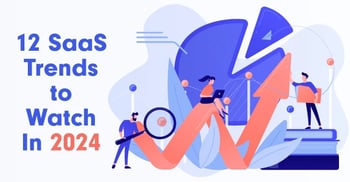Product-Led Growth for SaaS: Definition, Steps + Examples
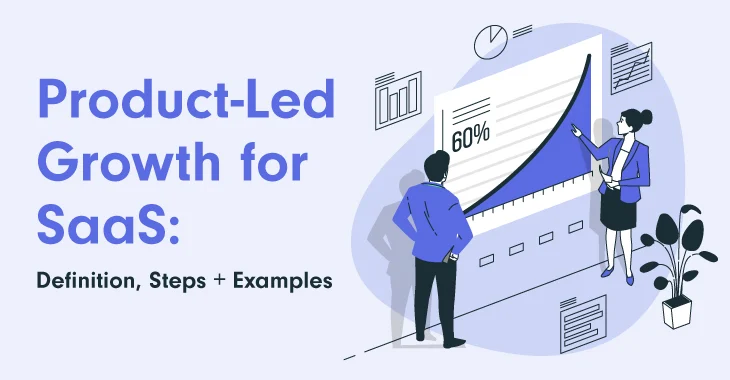
We’re seeing more and more companies ditching old growth strategies just to become part of the popular PLG club. And the SaaS industry is by no means an exception to this trend.
The question is why.
Why is the product led growth strategy (PLG) trending? We think we might have an idea!
- 58% of B2B companies have a product led strategy in place.
- 77% of companies with $250 million to $1 billion ARR use the product led growth model.
- 70% of clients are more likely to recommend a PLG company to others.
So, apart from increasing software sales, improving customer experiences, achieving customer success, or encouraging external investments, the product led strategy makes sense. It’s that simple.
So, let’s dive into the PLG strategy, looking at:
What is PLG (Product-Led Growth)?
5 PLG Benefits For SaaS Businesses
PLG Vs. Other Growth Strategies
8 Metrics To Measure PLG Success
What Is PLG (Product-Led Growth)?
The product led growth model is a go-to-market strategy that places the product at its very core, using it to achieve revenue growth at all its stages. Instead of relying on traditional sales outreach or marketing campaigns, the product itself becomes the engine of customer acquisition, retention, and expansion.
How Does PLG Work In SaaS?
PLG companies have a greater potential to go viral, which obviously leads to more customers and lower acquisition costs if the model is correctly applied.
There are certain rules that SaaS companies need to consider when going full product-led. So, let’s discover what they are and understand if they match your business.
1. Develop a Self-Serve Buying Process
In this scenario, the product is the lead magnet, pulling customers closer and allowing them to discover your solution without the need for assistance. So, you first need to ensure your target audience has an intuitive purchasing experience.
Create a website that conveys the product value you bring by:
communicating your value propositions
displaying your pricing plans and everything they stand for
creating a simple product sign-up and setup process.
At the end of the day, you need to make sure that you can gain new users and generate business growth without requiring the significant assistance of marketing and sales teams.
2. Harness the Power of Free Trials Or Freemium
In the PLG model, a nice website with smart copy won’t be enough to drive exponential growth.
You’ll definitely need something extra to sweeten the deal.
The freemium model or free trial implementation can give you the push you need when it comes to obtaining users. If you choose the freemium product approach, you need to make sure that potential users have complete access to your product’s core features.
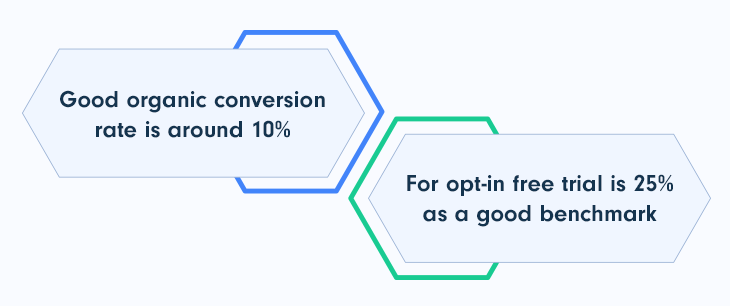
As a matter of fact, these pricing tactics are one of the pillars of the product-led model because they are all about giving users a taste of your product’s value and gaining PQL (product-qualified leads).
3. Offer More Product-Focused Onboarding
Product led businesses are product-focused all the way, and this, of course, includes the onboarding process. But what do we mean by this exactly?
Considering that seamless onboarding can lead to faster product adoption and value delivery, it’s crucial that you invest time in making this process easy to follow, user-friendly, and user-friendly self-serve.
The traditional software company introduces its solution with the help of human agents, emphasizing hyper-personalizing the interaction. While this method has its own benefits, the PLG self-serve option is a much better option when it comes to achieving user satisfaction.
Not only are you able to track user behavior, understand where your product is losing, and then make further improvements, but users feel better about the product when discovering what the solution can do for them all on their own.
In-app guidance, simplified workflow, and video assistance are some ideas you can use to put your product to work during the onboarding process.
However, keep in mind that PLG onboardings require a lot of ongoing work and improvement.
4. Fix Your Pricing
Pricing is just as crucial for the SaaS business as it is for its customers. And finding the balance between the parts is not a simple thing to achieve. You want to price your product high enough to drive growth, but you can’t go too high to miss aligning it with customer demand.
So what do you do?
You experiment.
Apart from using the freemium or free trial, which is a must of the PLG flywheel, you can orient yourself towards the usage-based model. Of course, flat-rate or per-user are just as good.
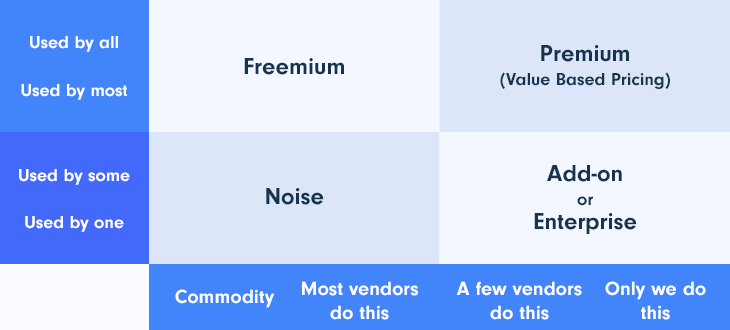
Consider your target audiences, collect historical data, and, most importantly, your product features, responsible for providing users with value.
Lastly, consider the tiered pricing technique, as it does wonders for customer segmentation. And don’t worry if you have an endless number of plans. Look at Hubspot’s pricing frenzy, because you can’t deny it’s giving excellent results.
5. Collect Data and User Feedback. Always.
The product led growth business strategy might be responsible for lower user acquisition costs or significant revenue growth, but only when it’s implemented by the book.
Without consistently collecting product usage data through a dedicated analytics tool to check how your customers enjoy your solution, it is very difficult to decide what product development changes you should make. Plus, offering smooth user experiences would not be possible in this example.
Thus, this growth strategy relies heavily on gathering as much data and feedback as possible.
One should use heatmaps, session recordings, or user paths to find out:
User progress and actions
Areas with the highest engagement
Frustration points
Feedback is highly relevant here, and we say this not just for product-led businesses but all SaaS companies. However, the great thing about this strategy is that it can award you with product insights early in the process, allowing you to spot churn potential quickly.
So, make sure you implement:
In-app surveys focused on specific areas or product features
NPS surveys
6. Turn Your Product Into An Essential Tool
Customer lifetime values and user retention are just as important in boosting your average revenue as lowering customer acquisition process costs or diminishing operational resources.
This can only be done by going from a nice-to-have to a must-have solution, which, as you know, might be particularly challenging in the competitive SaaS industry. Not impossible, though.
By constantly providing value to your users through new features, updates, and incentives to convince them to continue using your product, you can boost your monthly recurring revenue.
Bottom line: your product needs to become and remain indispensable for your users.
5 PLG Benefits For SaaS Businesses
Since relying heavily on external funding, the holy grail of SaaS companies is an increased IPO. This generally signals strong financial performance, customer acquisitions, and an increased NDR.
The funny thing is that the top IPO companies are also PLG-driven.
It can’t be a coincidence, right?
Well, the explanation is simple. This growth strategy has numerous benefits which cannot be underestimated. So, let’s take a closer look at them.
1. Lower Customer Acquisition Costs (CAC)
Achieving a low customer acquisition rate is in all the SaaS growth books.
However, more often than not, gaining new users without overspending feels like an impossible mission. Why? Because the focus isn’t on the product but rather on the skills of sales reps.
SaaS businesses are spending small fortunes to make their marketing efforts and sales team bring results. Essentially, what they are asking is for the customer to try the product without testing it first.
Product led companies, on the other hand, are turning the offer into the customer magnet.
And with 62% of PLG companies mentioning that the primary acquisition source was organic channels, it seems as though it's working.
By doing so, you are cutting back on your sales team salaries and marketing team expenses, allowing you to redirect your resources into different customer segments like support or onboarding.
2. Boosted Revenue Per Employee
By eliminating the acquisition burden from your team's workload, you’ll give them the freedom to focus more on other fundamental tasks, leading to 25% greater RPE.
With the product doing all the work, your marketing experts can focus more on achieving customer success by having time to a deep dive into analytics.
Your sales team can focus on more complex expansion projects and even collect feedback, which can then be passed on to the technical department for implementation.
3. Improved User Engagement and Experience
One of the critical conditions of the product led growth strategy is a solid emphasis on user experience. It is very important to be certain that your product is, in fact, solving pressing customer pain points.
Since adopting the product led approach goes from winning free trial users and turning them into paying customers and boosting customer lifetime value, all thanks to the product, constantly targeting an improvement in customer experience is key to success.
When your entire growth strategy focuses on product usage, you must make sure that each customer interaction point brings immediate value. This is the only way you will be able to acquire customers and ultimately retain them.
Because you are putting effort into keeping clients satisfied with your service, PLG companies are 2.5 times more likely to gain positive customer sentiment and advocacy.
Immediate value + positive feedback + user referrals = guaranteed success.
4. Better Product-Market Fit
With a 30% higher rate of feedback from users, it’s safe to say that a product-led company has enough information to perfect its offering.
Because potential customers are given the option to test the product before they buy it, it gives software companies the opportunity to identify issues or bugs within the app and fix them.
Plus, successful SaaS companies will take a step further and even add features to better fit the needs of their users.
As you know, the happier the users, the lower your net customer churn rate is.
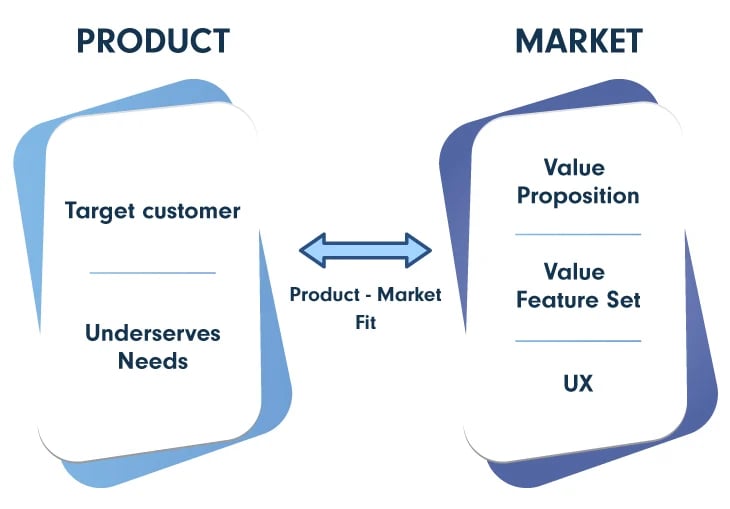
The product-led growth approach really sets the mood for PMF (Product Market Fit), and that’s a huge advantage within the competitive SaaS landscape.
5. Shorter Sales Cycles
One of the most highly valued advantages of PLG for SaaS companies is its ability to accelerate the sales cycle, resulting in faster revenue generation.
In a product led business, self-service SaaS onboarding is the standard practice. Users have the opportunity to test and utilize the product either for free or with minimal financial commitment, allowing them to independently learn its value. This eliminates the need for prolonged sales negotiations.
Furthermore, PLG products typically integrate in-product tutorials and guidance, expediting product adoption and diminishing the need for pre-sales training and support.
The ability to address specific pain points, provide seamless user experiences, and deliver immediate value are all reasons why product-led growth is renowned for its swift transition from free to paid users.
PLG Vs. Other Growth Strategies
So far, we’ve discussed what PLG is and why it’s so popular among SaaS companies. But how is it in comparison with other growth strategies?
After all, PLG companies weren’t always around, and somehow, entrepreneurs managed to make a profit.
So, let’s look at the difference between the PLG approach and sales- and customer-led strategies.
PLG vs. Sales Led Growth
Probably the most popular growth approach for SaaS companies is the sales led strategy, which relies heavily on a strong sales team to generate and close leads.
Since they need to educate the target audience through persuasive speeches on product features and benefits, the sales cycle tends to be longer than in the PLG case. Multiple steps are involved, such as qualifying leads, scheduling demos, and negotiating contracts.
Plus, the resources associated with the sales led growth process are more extensive.
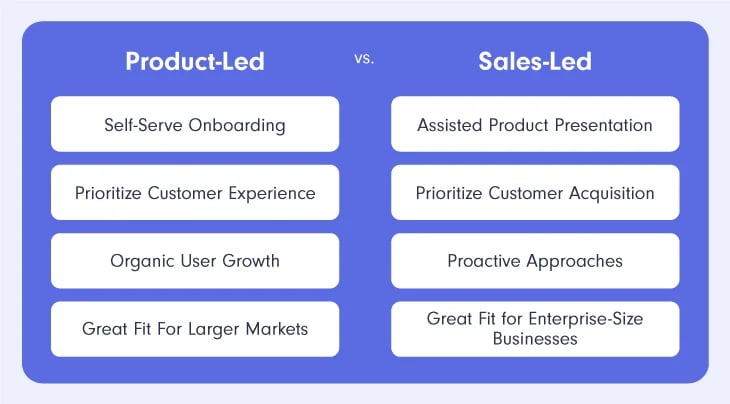
Even though PLG would appear to solve several issues and have shorter sales processes, fewer resources required, and less friction, it still might not be the best choice for more complex SaaS products.
These require a more in-depth solution presentation, which only a skilled sales team can successfully deliver.
So, if your product is meant for enterprise buyers, SLG might be the road to take.
PLG vs. Customer Led Growth
As the name implies, CLD (Customer Led Growth) places the user at the heart of everything.
Relying extensively on feedback from existing customers, this approach is all about connecting with the target audience through its product and acquisition channels.
Your customer success team will do their best to collect information from users, focusing on more than just product development. With CLG, the goal is to provide satisfaction throughout the entire customer journey, from discovery to evaluation and even on to retention.
With targeted strategies, the growth potential is huge.
Since collecting feedback is easier to achieve in PLG companies, combining the two growth approach feels natural. But then again, in order for the sales-led growth model to give the expected results, there needs to be a synergy between your sales and customer success teams.
In other words, CLG works best when combined with another approach that provides the framework to put user feedback to work.
And there’s a catch. CLG is not cheap. A heavily evaluated product cycle, requires extensive resources, which more mature businesses can sustain.
8 Metrics To Measure PLG Success
So, the PLG strategy is all about placing your product at the very heart of your welcoming committee. Sounds good, right? But how do you figure out how this strategy is actually performing? In the sales-led growth method, your experts would check in with your potential customers. But what can you undoubtedly rely on in the PLG strategy?
Metrics, of course. They can track the progress of your freemium or free trial efforts and give you insights into how you can optimize each phase to ensure a higher free-to-paid conversion rate.
But what are those key metrics you need to worry about? Let’s find out!
1. Product Stickiness
Tracking product stickiness is actually measuring how essential your solution is for your target audience. Do they get enough value from it to return to it over and over again? Are they making it part of their business routine? Can they live without it?
By monitoring this metric, you can gain product usage data and users, as well as identify those essential features that bring the most value to your audience.
How To Calculate Product Stickiness
Product Stickiness = Number of Daily Active Users (DAU) / Number of Monthly Active Users (MAU)
2. Time To Value
Everything takes some getting used to, including the discovery of a new SaaS product. The question is, how long? How long does it take for your users to find value in your solution?
That’s what this metric is looking at.
TTV (time-to-value) is one of the key metrics for product-led companies. You want this ratio to be as low as possible, meaning that your users get to the A-ha moment rapid-fire. Otherwise, the longer it takes them, the higher the chances are they churn. And then you’ll be saying goodbye to your retention goals.
How To Calculate Time To Value
TTV = the time between the initial sign-up and activation
3. Churn Rate
We know what you are going to say about this metric. What SaaS company doesn’t track churn, right?
While this might not be a super-specific metric for product led companies, it still cannot be overlooked. After all, the net revenue churn rate looks at the number of clients who have decided to stop using your product either because it didn’t provide enough value or they found a better alternative.
Monitoring your churn rate helps you understand how good your product really is.,. And the more unhappy clients, the clearer the message is.
Spotting early signs of a churn increase could allow you to take proactive steps and improve your services before things take a turn for the worst.
How To Calculate The Churn Rate
Churn Rate = (Number of Customers Lost / Total Number of Customers) x 100
4. Net Promoter Score
What reigns supreme in the PLG model (aside from the product)? User satisfaction and loyalty, of course. By monitoring these two aspects of your business, not only are you ensuring that your product is regarded as valuable by your users, but they are also more likely to recommend it to others.
Word of mouth is one of the most powerful fame drivers in the PLG universe, so you need to make sure that people are talking about your product positively.
With NPS on your metric cheat sheet, you are keeping tabs on these areas of your business and customer satisfaction.
Net Promoter Score is calculated using a simple one-question survey: On a scale of 0 to 10, how likely are you to recommend our company/product/service to a friend or colleague?
Based on the answers you receive, you then divide your customers into three categories:
Promoters (9-10 score): These are your highly satisfied users, who are very likely to recommend your product and become loyal advocates.
Passives (7-8 score): These are somewhat satisfied users who won’t be speaking ill of your company but will not actively recommend your business.
Detractors (0-6 score): They are unsatisfied customers with negative impressions of your products and highly unlikely to recommend your business.
How To Calculate NPS
NPS = % Promoters - % Detractors
5. Feature Adoption Rate
What makes your product sticky? Your features.
In the product-led growth approach, knowing which features bring value to your users is key, and luckily, you can easily monitor this by using the feature adoption rate.
This metric analyzes each feature to determine user engagement. The higher this value is for each of your features, the higher the overall value of your SaaS solution is.
Moreover, by looking into each feature individually, you can pinpoint which area of your product is underperforming and make the necessary adjustments. You are no longer working in the dark when you pay attention to this metric.
How To Calculate The Feature Adoption Rate
Feature Adoption Rate = (Number of New Feature Users / Total Number of Feature Users) x 100
6. Activation Rate
There is no turning your product into a customer magnet without users actually testing it. And the only way you can monitor this is by looking at the activation rate.
The action that is tracked by this metric varies from product to product. In the case of SaaS apps, it is either the completion of the onboarding process or a flow demonstrating that the solution is actively used.
The activation rate is more relevant for product led businesses than sales led companies because it measures initial user engagement, which is a key moment in a self sustaining growth cycle.
In this case, a high metric value will lead to higher revenue, whereas a low one suggests that improvements are required.
How To Calculate The Activation Rate
Activation Rate = (Number of Activated Users / Total Number of New Users) x 100
7. Product-Qualified Leads
Specific to free trials or freemiums, product-qualified leads (PQL) are customers who have interacted with your product positively and are likely to enter the buying stage.
They represent a more modern approach to lead qualification, putting great emphasis on the user’s behavior and experience with the product itself.
Keeping track of these leads will help you better measure the effectiveness of your growth approach, gain an overview of your top features, and align all your business efforts within the different stages of the customer lifecycle.
How To Calculate Product-Qualified Leads
Because this metric is user-oriented, the one-model-fits-all approach doesn’t work here. So, it’s very important for each SaaS company to map its PQL profile, looking at things like demographics and milestones. Completing a series of specific actions as part of an in-house developed system can make your leads more accurately qualified.
8. Expansion Rate
All SaaS products, PLG or not, care about how much revenue they make. It’s a clear sign that users are engaging well with your solution, going beyond their regular payments and making further investments.
The expansion revenue rate measures the spending of a company’s existing customer base by looking at upselling, cross-selling, or add-ons.
These validate not only revenue growth but also a sense of brand trust and user satisfaction, confirming that the product in question brings value.
How To Calculate The Expansion Rate
Expansion Rate = (Number of Activated Users / Total Number of New Users) x 100
4 Examples of PLG Products
These days, finding PLG companies isn’t challenging at all. But some really stand out in a crowd.
1. Canva
There was a time when people raised their eyebrows when hearing about Canva. Now, this graphic design software is a household name.
Yes, you could say that Canva owes its success to the product-led movement, but the truth is that the product itself does a great job.
Canva says it empowers individuals to create professional-looking designs and print them anywhere. And they keep their promise.
How do they do it?
Through their friendly user interface, rich template library, and extraordinary ease of use, anyone can be crowned as the Designer of The Day using Canva.
Using the freemium model, users can test everything Canva has to offer at their leisure without being pressured in any way.
It delivers value incredibly fast, as you can build a stunning design in less than one minute.
2. ClickUp
Closing 2022 with $150 million in revenue and servicing 100,000 paying customers, ClickUp is thought to be one of the world’s fastest-growing SaaS startups.
Even though the PLG approach isn’t the only growth strategy used by ClickUp, it is certainly the driving force. So, let’s see why this business example is worth discussing.
How do they do it?
ClickUp relies heavily on feedback. It always has. This company’s success team is dedicated to finding out where their product wins and where it fails.
The referral program technique is extensively used by this SaaS app, working hard to reduce customer acquisition costs.
Just like Canva, ClickUp offers its users a freemium option, together with other pricing tiers, giving users a chance to really get to know and fall in love with the product before upgrading.
3. Grammarly
What works as a digital writing assistant and uses AI to improve its processes? Grammarly, of course, is also one of the SaaS products of this type.
Used by almost everyone these days, from freelance writers to corporate teams, Grammarly has really made an impression in terms of properly marketing their product.
How do they do it?
The fact that they are using the freemium models, combined with different pricing tiers to properly segment audiences, gives Grammarly the PLG pass.
The product itself has plenty of useful features and a user-friendly interface, quickly bringing about those A-Ha moments that customers love so much.
It appeals to user emotions, shame being one of them. Users want to avoid making grammar mistakes and being labeled as unprofessional. Grammarly helps in easily achieving these goals.
4. Figma
We couldn’t end our list of top PLG products without adding the following one.
Figma, the now famous worldwide website design tool, has reached $400 million in revenue in 2022. And it’s been part of the SaaS market for only 8 years.
Clearly, they’ve mastered the art of product-led growth.
How do they do it?
Even though there are several pricing tiers available, this website design app offers users a free plan with a significant amount of features, sure to deliver substantial value.
Thanks to its collaborative capabilities, users join to participate in different team projects, leading to an increased product adoption rate and organic growth.
Through plenty of educational resources, a strong community, and dedicated plugins, Figma manages to foster a real sense of belonging and significantly boosts user engagement.
How Can PayPro Global Help?
Product-led growth can be a highly rewarding growth approach as long as you can count on two things: a strong product and a payment infrastructure that can align with the different customer journey stages.
PayPro Global’s all-in-one eCommerce solution helps you sell SaaS and software anywhere in the world in the manner you choose. Freemium, free trial, tiered pricing… you name it, we got it. Our system lets you test, implement, and monitor different SaaS growth strategies in record time and is totally hassle-free.
Offering you the right mix of methods and currencies, 28 supported languages, and branded checkouts, we make it easy for your users to switch to paid plans.
Moreover, thanks to PayPro Global’s powerful subscription engine, packed with growth-oriented features like automatic subscriptions, and customized charges, including upgrading or on-demand transactions, you can lower your churn rate and optimize your operational workload.
And since data is king in the world of SaaS, PayPro Global’s AI-driven SaaS analytics and BI tools deliver the intelligence you need to make the right business decisions.
Visit PayPro Global or reach out to find out how we can help you stay on top of your SaaS pricing strategy.
Final Thoughts
We can wholeheartedly say that these days, product-led is everywhere you look. Some say it will become the norm, whereas others tell us that it already has.
But does it fit your SaaS?
The truth is that despite being incredibly popular and effective in terms of results, it’s not always the right choice.
Product-led growth is about showing off your product and building a fan club around it. It’s about mastering the art of feedback collection and implementation, delivering value in the fastest possible way, and encouraging self-education.
But what happens if your product is incredibly complex and expensive to build? You cannot expect people to fully grasp the power of complicated infrastructure simply by relying on themselves. In most cases, this leads to utter disappointment and a frustrated audience, which will certainly not bring you the revenue boost you hope for.
The shift towards a product-led approach shouldn’t be backed by the desire to be the rule rather than the exception. It should be a strategic decision that considers product architecture, customer journey, target audiences, and future development requirements.
Ioana Grigorescu
Ioana Grigorescu is PayPro Global's Content Manager, focused on creating strategic writing pieces for SaaS, B2B, and technology companies. With a background that combines Languages and Translation Studies with Political Sciences, she's skilled in analyzing, creating, and communicating impactful content. She excels at developing content strategies, producing diverse marketing materials, and ensuring content effectiveness. Beyond her work, she enjoys exploring design with Figma.
-
1.Explore PayPro Global's Solutions: See how our platform can help you streamline your payment processing and boost revenue.
-
2.Get a Free Consultation: Discuss your specific needs with our experts and discover how we can tailor a solution for you.
-
3.Download our Free Resources: Access valuable guides, checklists, and templates to optimize your online sales.
-
4.Become a Partner: Expand your business by offering PayPro Global's solutions to your clients.
Get the latest news


